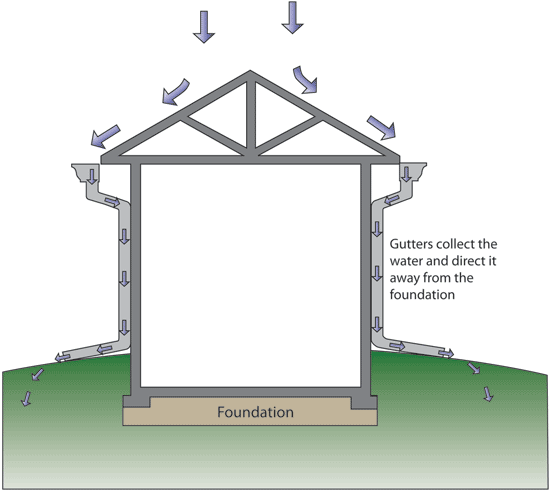Image courtesy of Seal-Tite
This is the first installment in a series of blogs on keeping your basement dry. This will not cover all of the possible ways that water can get into, and damage your basement, just the most common and easily corrected. Today I will describe one of the “forces” behind moisture intrusion (water leakage) and the likely consequences.
Moisture intrusion is one of the most common problems found during a home inspection. Dampness, water damage, and mold are consequences of moisture intrusion. The cost of correction can range from a few hundred dollars to thousands of dollars. Usually the determining factor in the cost of correction is the amount of time that the problem has been active. The longer that water is allowed to collect near the foundation, the more likely it is to cause damage. When the soil in contact with the foundation is wet it becomes very heavy and exerts greater lateral pressure on the foundation. When the soil freezes and expands, this pressure increases significantly and is a common cause of cracked foundations.
Soil exerts lateral pressure on a foundation
Many of the homes that I inspect are occupied by the seller or their tenant. Even in a reasonably well cared for home, the occupant may have no idea they have a moisture intrusion problem. Clues such a musty, damp odor are often accepted as normal until it is discovered by the home buyer’s inspector. At this point the cost of repairs will be higher, and you’ll have little time to pick the best contractor, or shop for a better price.
If you stop and think about it, a wet basement can cause a lot of problems in your home. Once the basement is wet, it can affect indoor air quality, irritate asthma and allergies, damage carpet, furniture, or stored items. Most of the time, a wet basement is caused by a problem on the home exterior, so we will start there.
You can break down every moisture problem into two categories:
A force, such as water flowing over the clogged rain gutters,
An avenue, or means of access to the basement, such as a crack in the foundation.
Clogged rain gutters are your basement’s worst enemy!
Clogged, or poorly maintained rain gutters are probably the most common cause of a wet basement. You might be surprised to learn that rain gutters are often overlooked when it comes to home maintenance. Even when the rain gutters are cleaned, they may not be cleaned often enough. Once leaves, and debris such as pollen, fill the rain gutters the water begins to accumulate. The weight of the water and debris will cause the rain gutters to loosen from the structure, sag, and the water will eventually overflow them. It is also important for the rain gutters to be properly sloped to direct water to the downspouts, and the downspouts have to take the water far enough from the home to prevent water from collecting near the foundation.
This is how the rain gutters are supposed to work. Notice water flows away from the foundation.
In the illustration you can see how the water from the roof should flow away from the home. This is a system deliberately designed to protect your basement and foundation. When this system is disrupted by clogged, sagging, or loose rain gutters the water overflows and runs down the side of the home and usually collects near the foundation. Of course you have to consider that this only happens when it rains, and the rain will also fall on the ground right outside the foundation. This can, and frequently does add up to a lot of water: rain + clogged gutters = disaster! This is the most common “force” for moisture entering the basement.
In our next installment I will discuss the most common avenues for the surface water to enter the basement.
Thank you for reading my blog!
Sonny









